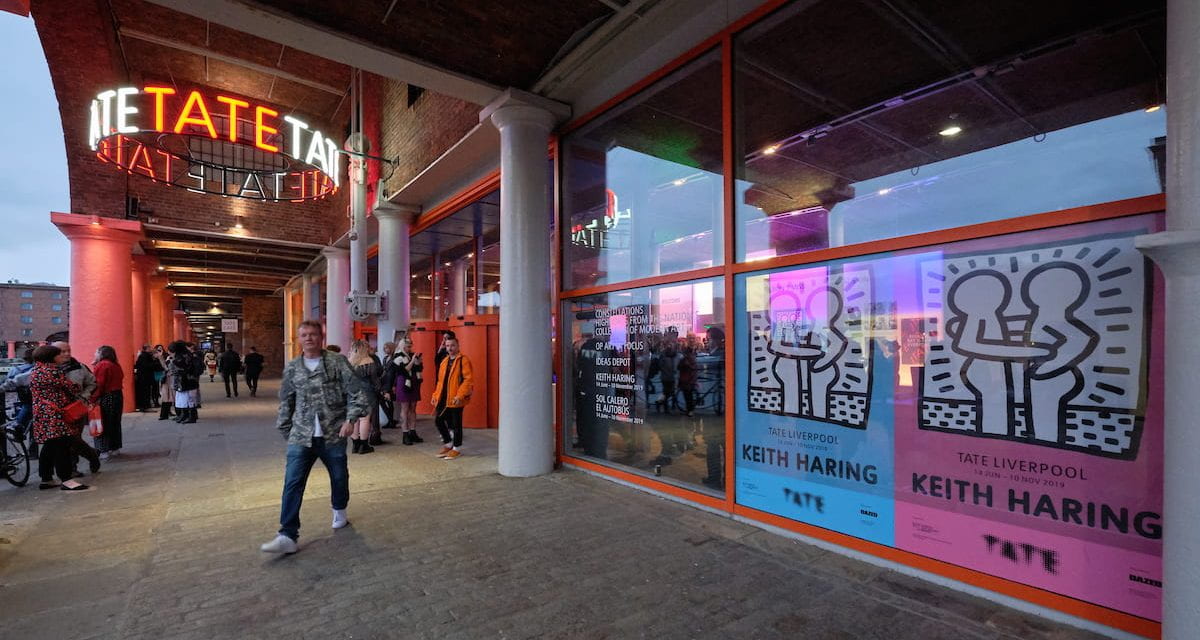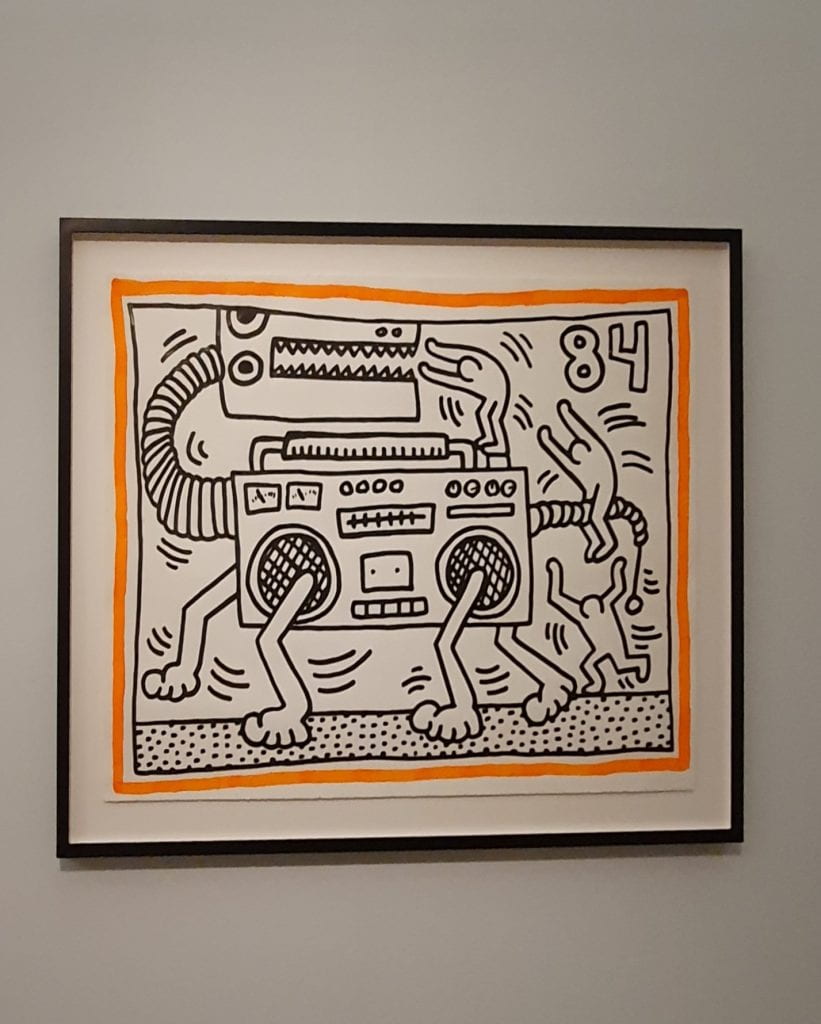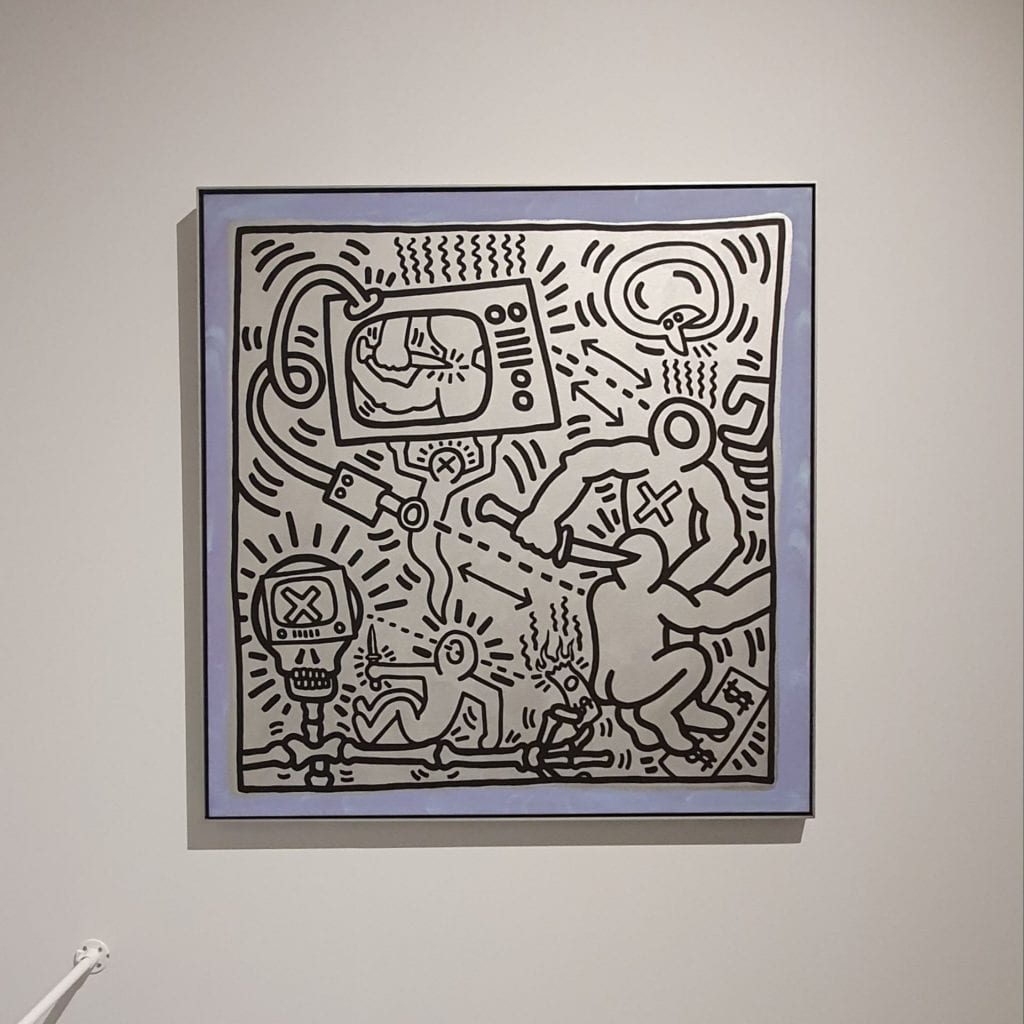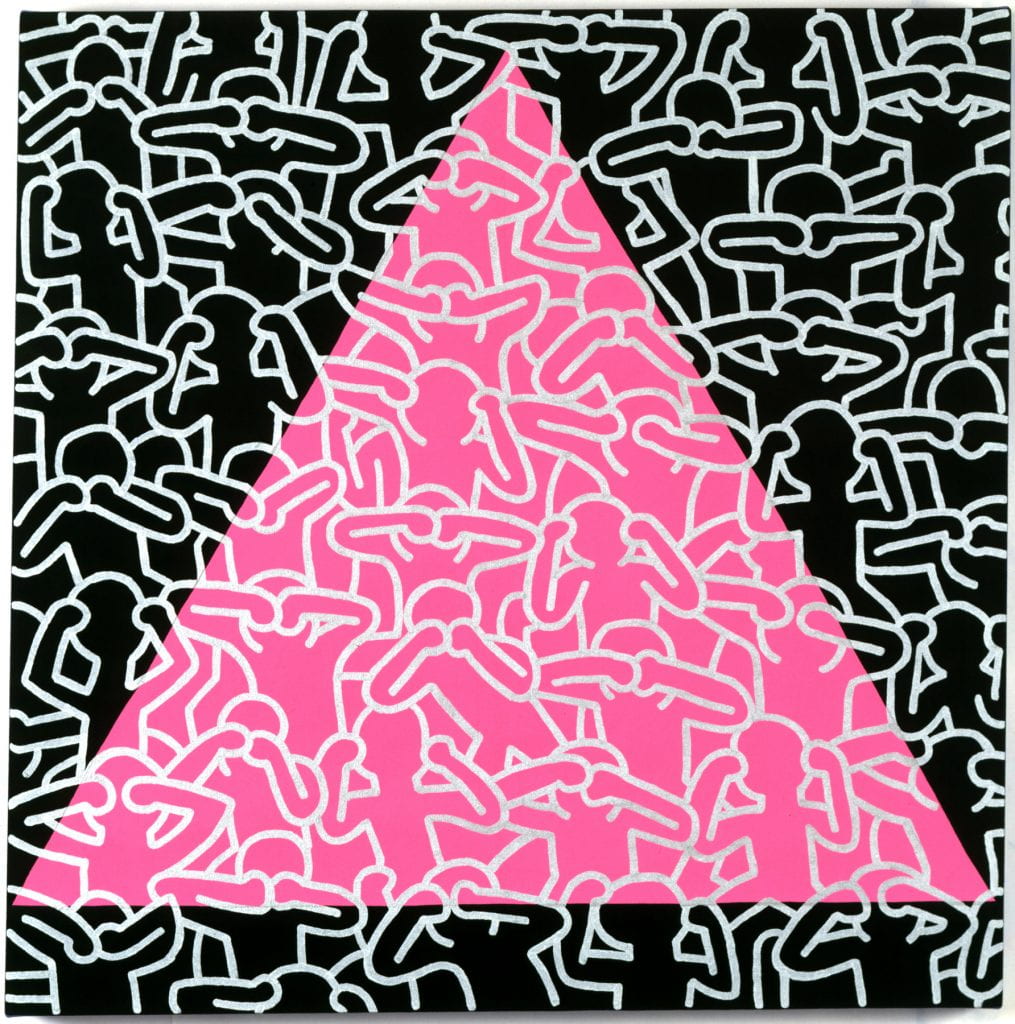As November marks the closure of Keith Haring’s first major UK exhibition – a show also travelling to Brussels and Essen over the next 10 months – the shocking relevancy of his work shines through as bright and as punchy as the colours of his paintings.
Haring, who passed in 1990 at the age of 31 due to AIDS related complications, was an artist and prominent activist throughout the late 70s and 80s. His work is deceptively simple and borderline childlike in style and form.
The appealing and unoffensive style that Haring crafted became a symbol of 80s street and Pop-Art culture. Some of his work became synonymous with counter-culture and Hip-Hop, including RUN-DMC covers and images depicting dancing and ‘Ghetto Blasters’.
A plethora of his hieroglyphic like characters, including crawling babies, barking dogs, and groovy genderless figures remain heavily in the public consciousness. Often coming in the form of capsule clothing collections and Ikea furniture.
Although on the surface his work is hyper-marketable and innocent in content, Haring used many of his figures to create powerful pieces of political commentary and activism.
The mixing of recurring motifs, including his more iconic characters, with symbols of drug culture; themes of nuclear war; pro-gay rights messages; and strong opposition to 80s Apartheid Africa; meant that Haring created an instantly recognisable and eye-catching style, that communicated dark themes without being outwardly repulsive.
Many of these images depict a time in world politics where a level of noise and fear was constant. Reagan’s America and Thatcher’s Britain were rife with class struggle. The war on drugs ravaged households, and the fear of the Cold War was still prevalent, with activist groups calling for disarmament of weapons, and liberation of several oppressed groups in society.
These messages are being increasingly mirrored today, as tensions with countries such as Russia slowly grow again, and arguments for disarmament of weapons and the battle for gay rights are still shockingly relevant, despite over 30 years having passed since the artworks creation.
The accessibility and appeal of Haring’s work is its most powerful aspect, with his bigger pieces being incredibly detailed and prominent in adult themes. Use of thick lines, and bold popping colours cut through noise and invites you to take on images that can either be dreamscapes, or nightmarish and hellish.
His more abstract works feature paranoid projections of the rise of technology and consumer culture: freakish television headed figures burn money, as others are contorted and writhing engage in acts of sexual violence, all being captured and broadcasted again by CCTV.
Although caricaturing many pop-culture and science-fiction styled fears of the time, pieces like these have a haunting prescience as CCTV monitoring and facial recognition technologies are constantly innovating. London’s metropolitan police running trials to begin rolling out ‘Live Facial Recognition’ software, and the possibility of Hong Kong’s police using AI software to track protesters are two very current examples of this actualising.
Haring’s most famous and harrowing activist works came in the form of projects created with gay rights groups such as ACT UP (the Aids Coalition to Unleash Power). His images in this realm were often more abjectly sexual, but equally powerful. Some works included crude, cartoonish images of penises and condoms to advocate for safe sex, but others were more confrontational with the issue.
One piece, Silence=Death(1989), shows a collection of Haring’s figures in silver covering their ears, mouths, and eyes, all over the top of a pink triangle on a black background. The pink triangle is an icon reclaimed by the LGBTQI+ community that was used to identify gay prisoners within Nazi concentration camps. The use of the symbol and images of silenced people, served as a stark reminder of the stigma and death sentence attached to being infected with HIV at the time, but remains relevant as people within these communities are still challenged and oppressed in many countries around the world, even if some positive strives have been made in the West.
Haring’s name lives on within these communities as his charity, ‘The Keith Haring Foundation’, continues to support the education, prevention, and care related to AIDS victims, as well as assisting in the care of disadvantaged children.








